Where is Train Street? When does the train pass through the street? And where is the best place to experience it? In this guide, we have collected practical information and tips for Train Street in Hanoi. And yes, the street is still open. You just need to know how to get in there.
By Mette & Martin
Translated from Danish
In the past few years, we have visited Hanoi several times. Each time it has been fun to swing by the city’s iconic and more than a hundred-year-old street: Train Street. An unusual street. Because it does not consist of asphalt, but of train tracks, and a few times a day it is transformed into a railway as the train runs through the narrow street with clustered houses on both sides.
For many years Train Street has been among Hanoi’s most popular attractions. In some ways, it’s a bit crazy that observing a train passing by has become so hyped. It might be the intimacy of it – It does get surprisingly close. So even though Train Street has become a tourist magnet, it is a rare experience to sit in a cafe right next to the tracks and feel the rush as the train rumbles through the street.
And that’s why Train Street is on our list of the best experiences in Hanoi.
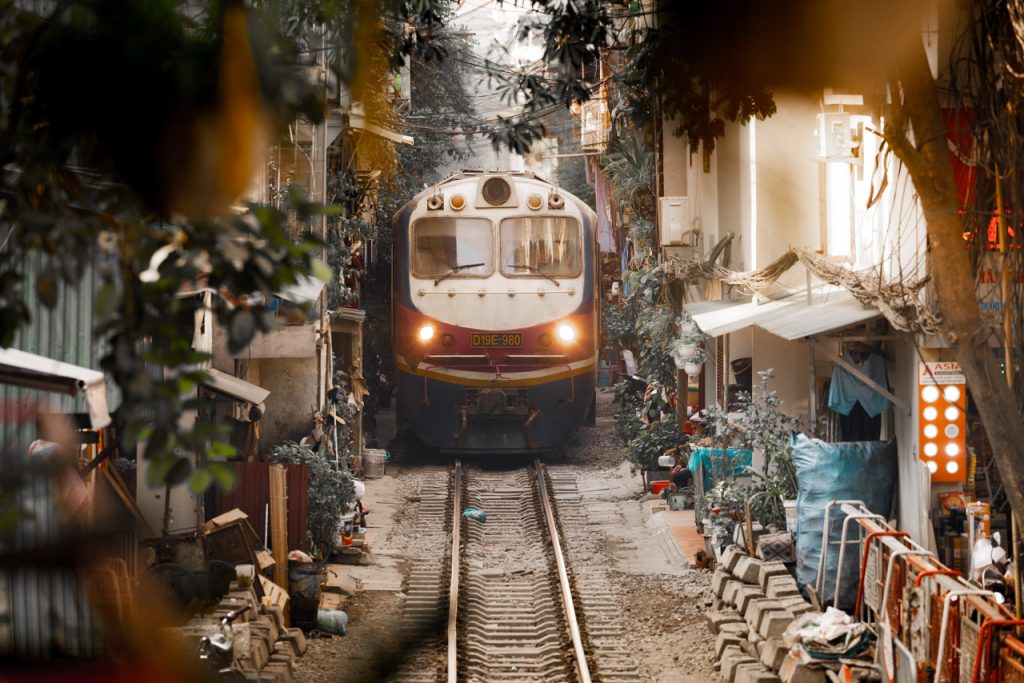
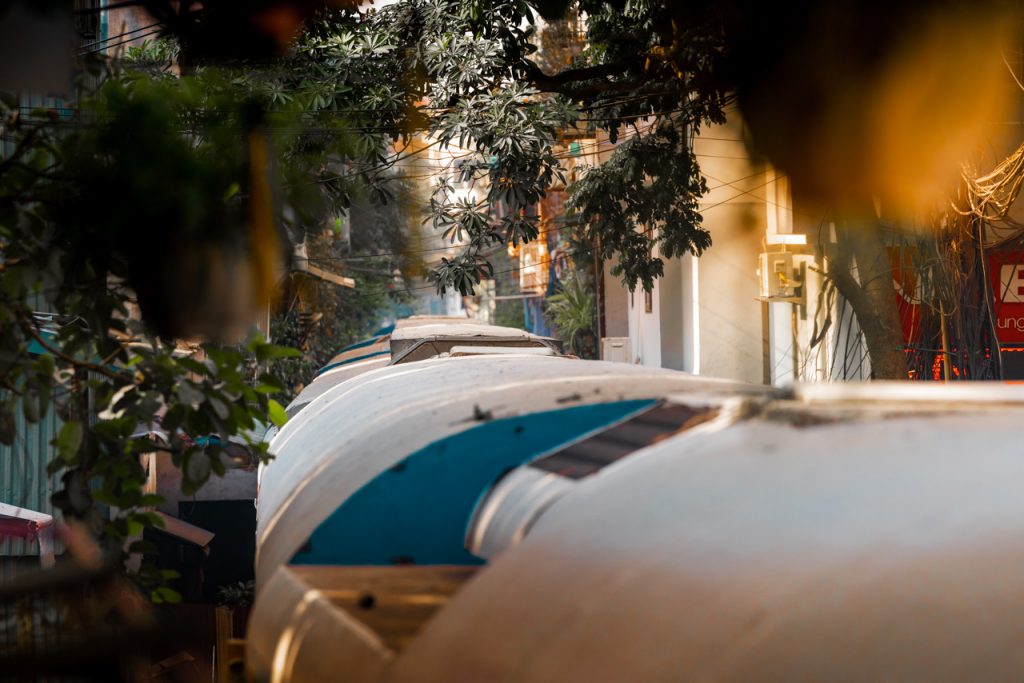
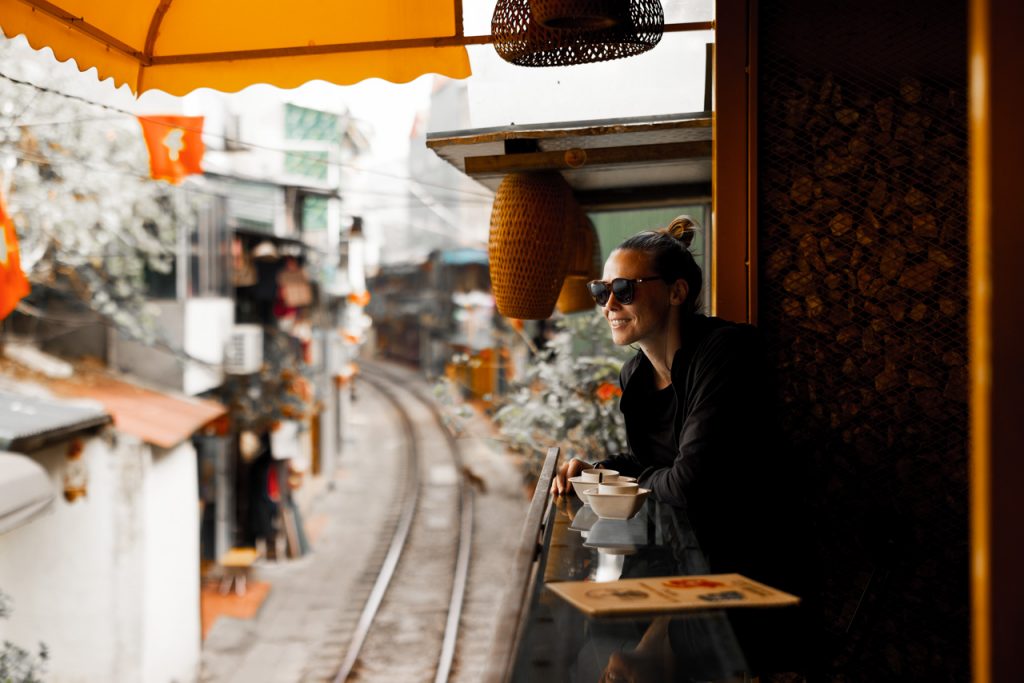
The story behind Hanoi Train Street
The railway was built by the French colonists in 1902. It cuts through the heart of Hanoi and connects the Vietnamese capital with the rest of the country. From north to south, it stretches 2.652 km, but it is only on two short stretches, each of a few hundred meters, where you can sit at arm’s length to the train tracks.
The special thing about Train Street is that the street functions (almost) like any other street in the old town. With small shops, coffee shops, and everyday life. Here, families live side by side with trains rumbling through their front yard every day. Parents pull their playful children to the side, chickens and dogs are chased off the tracks, and laundry flutters on the balcony as the long caravan of train cars rolls by.
Train Street has been frequently visited by tourists for many years, and in 2017 one of the locals recognized a good business idea and opened a café. It quickly became a success, after which several cafés sprouted along the rails. At least that’s the story we were told, and which explains why many of the buildings on Train Street today house small coffee shops with open facades.
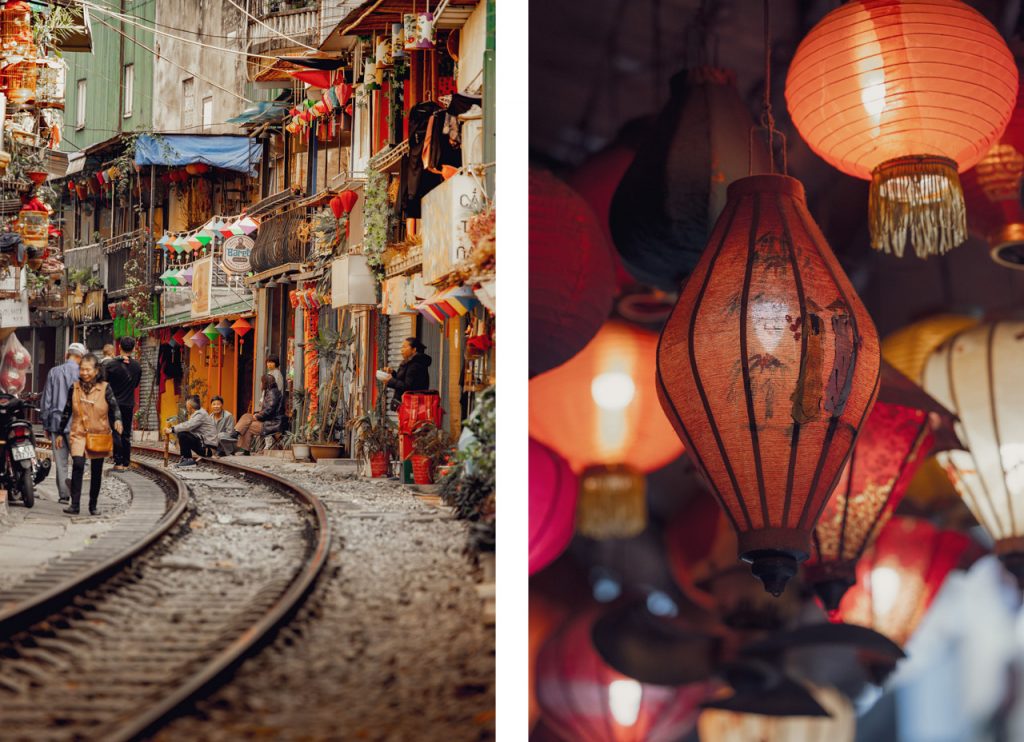
No access for tourists
When we first visited Train Street during Christmas 2022, there was a slightly brusque officer guarding the entrance at the railway crossing on Trần Phú Street. Train Street was cordoned off and all tourists were sent away. At first, we thought it had become illegal to visit the street. Or maybe the train didn’t run here anymore?
Since then, we found out that the most famous part of Train Street, located by the Old Quarter, had been closed to tourists in September 2022. According to the authorities, it had become too dangerous to visit the street. Too many people had started crowding – too close to the tracks – to capture the best Instagram photo as the train passed by.
Today, Train Street is only closed off for specific periods of time, and officially only residents are allowed to move freely on the street. As a tourist, however, you still have the opportunity to enter Train Street if you visit one of the many cafes. As they have preserved their permission to stay open. The new security measures therefore seem like a reaction to insta-daredevils and perhaps a hope for a more enduring and lucrative business model.
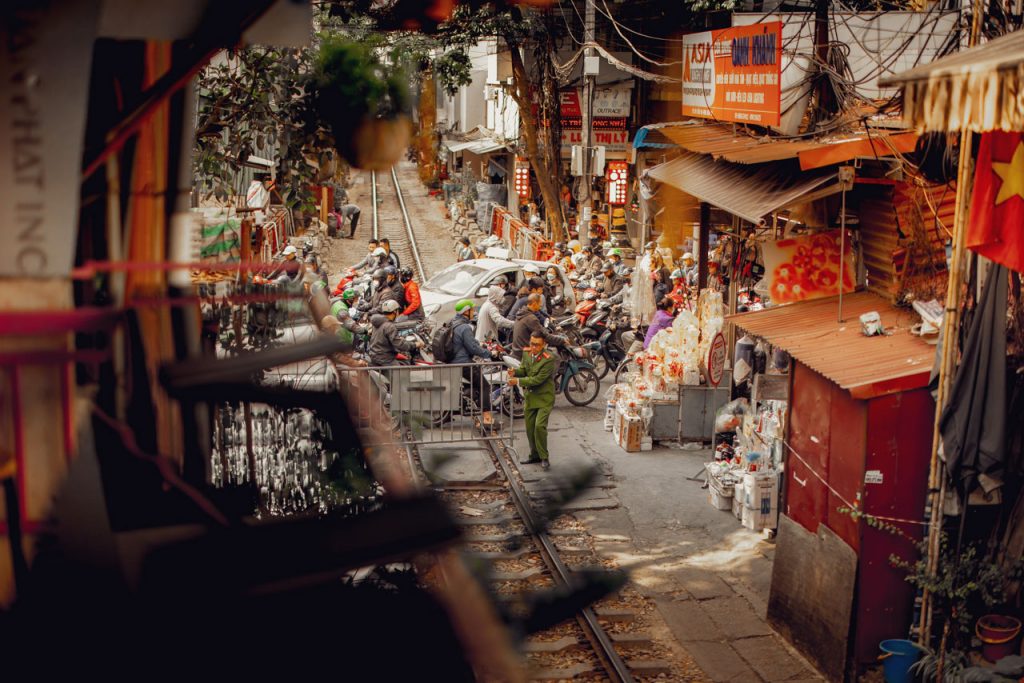
Here you will find Train Street
Today there are two short stretches of railway in the center of Hanoi where you can visit one of the many cafes right next to the train tracks. They are both called Train Street and are respectively north and south of the main railway station Ga Hà Nội.
Train Street (North)
Train Street (north) is located by the Old Quarter – between the main railway station and Long Bien Station. The line of cafes begins right where the train tracks cross Trần Phú Street and continues approx. 100 meters along Phùng Hưng Street. Please note that the railway crossing is closed during specific periods and that you must therefore use alternative entries to the street. Read more below.
Train Street (South)
Train Street (south) is approx. 25 minutes’ walk from the Old Quarter. The street is south of the main railway station and runs parallel to Lê Duẩn Street. The stretch with cafés is approx. 200 meters, and you can freely walk onto the tracks from either end of the street. We sat at the café 65 Railway Coffee, which is located in the middle of the line and has a good view in every direction.
Locations on Google Map
We have marked both entrances to Train Streets on our Google Map so you can easily find them.
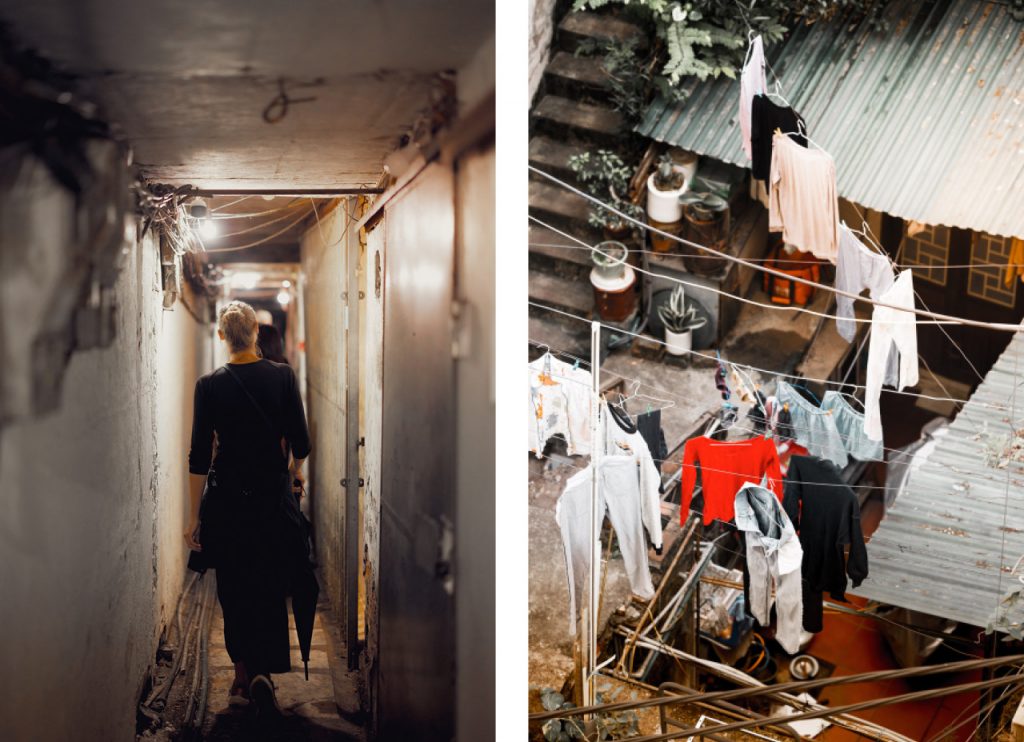
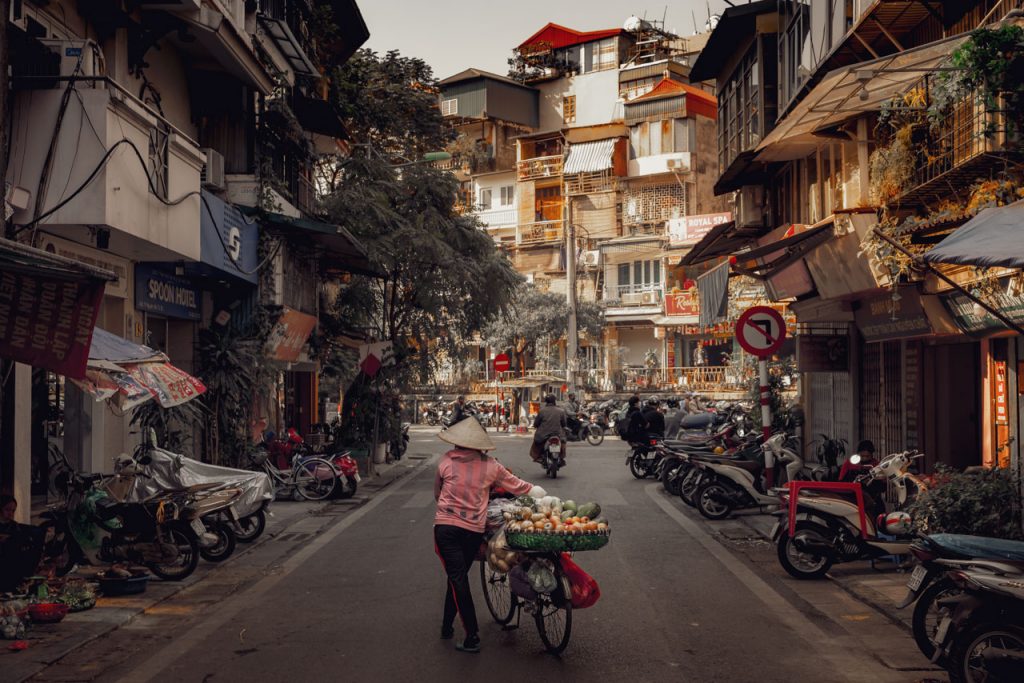
Entrance to Train Street (North)
At specific times – especially during the daytime and at the weekend – each end of Train Street (north) will be closed off. At Trần Phú Street, the entrance is guarded by an officer who only allows residents to pass the barricade. At the T-junction on Phùng Hưng Street resides the café owners who will let you in if you agree to visit their café. We have marked this entrance as ‘Train Street (North) – entrance’ on our Google Map.
No matter where and when you visit Train Street, you don’t have to pay an entrance fee.
Once you’re inside Train Street, you can walk around freely. But be considerate of the locals and respect their directions if they ask you to go off the rails. They are extra strict during the periods when the street is closed. The locals at the T-junction can be a little extra “enthusiastic”.
A secret entrance
We found a back entrance to Train Street (north) where we were allowed to walk freely in and out as the street was blocked off. You can find the entrance by walking through the bike shop located on Trần Phú Street, a few meters from the barricade where the officer is on duty. Look for the Eisenbahn Kaffe sign (see photo, here). From here, you must continue through a narrow corridor that leads you out to two cafes, Ga Dông Duong and Eisenbahn Kaffe.
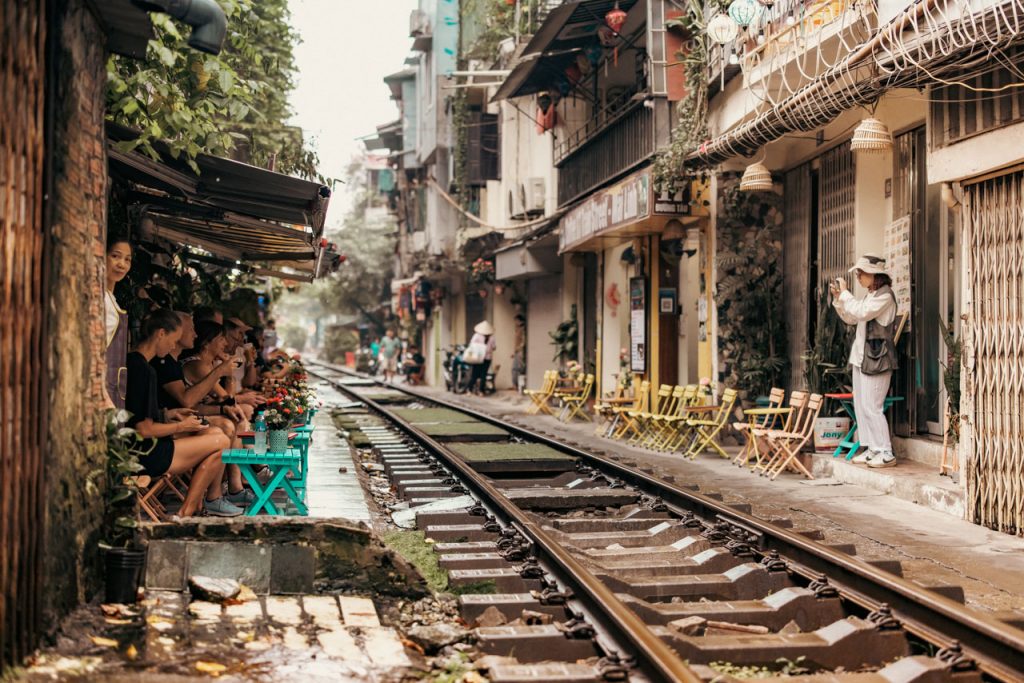
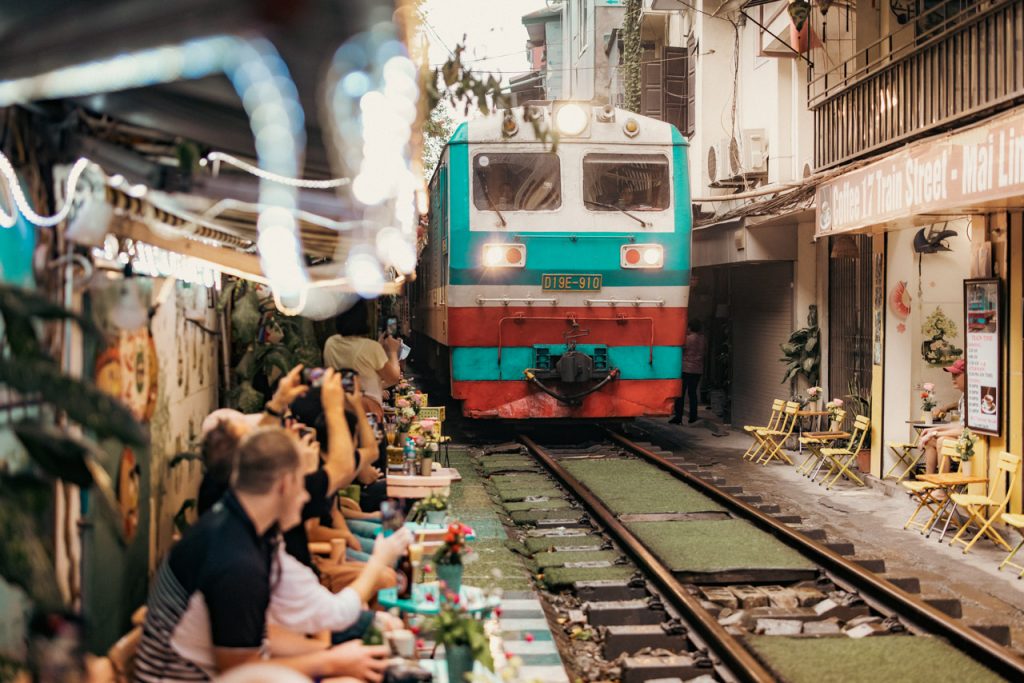
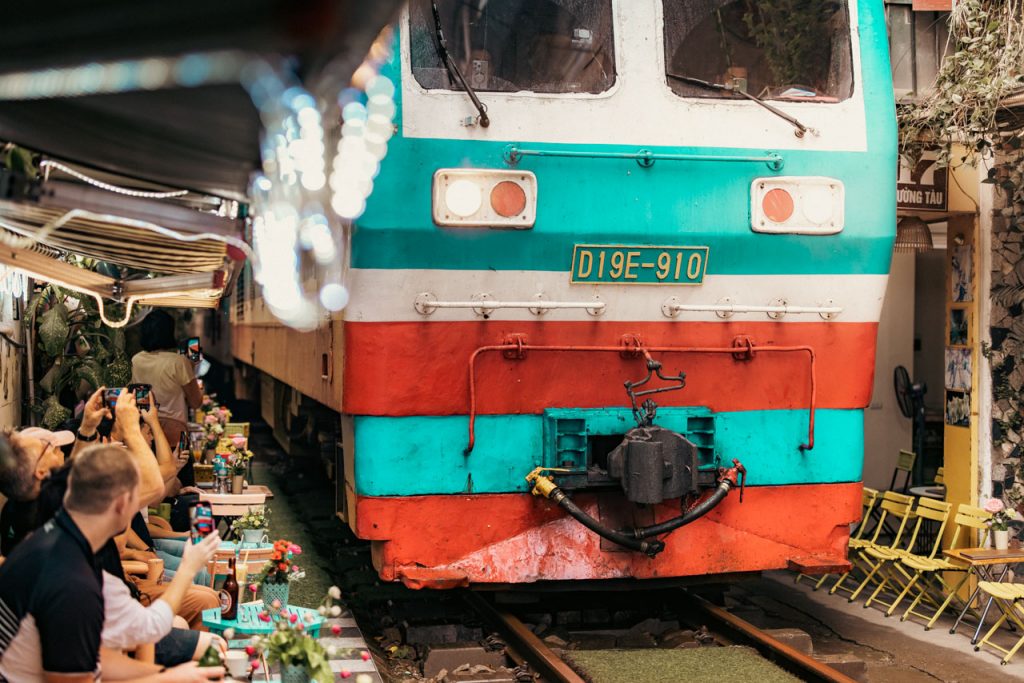
Which Train Street is the best?
Well from a photographer’s point of view, the bend of the tracks in the North area has a certain appeal, but the somewhat looser rules (or security) in the South area certainly also have its charm – especially after nightfall.
Train Street (north) is the most famous as it is close to the Old Quarter. Reportedly, it was also here that the first coffee shop opened years ago. Today, the cafés are stacked in rows on two floors, and most are decorated with colourful lanterns, signs, and flower boxes. It gives the street a charming, but also touristy atmosphere. On the other hand, the train tracks themselves are exposed opposite Train Street (south), which is partially marred by plateaus with artificial grass.
Train Street (south) has become the new place where guides take their tour groups during the day. Here you can freely stroll around the rails, regardless of day and time. There are slightly fewer cafes here than on Train Street (north). They are all at street level, and most of the buildings are still inhabited by locals. It makes the street look a little more authentic if you disregard the grass-green selfie spots on the rails.
We liked Train Street (north) best, which we visited both morning and evening. It was like experiencing two very different places. In the morning, the atmosphere in the street was peaceful and local, as it was forbidden for tourists to move freely on the tracks. In the evening the barricade was gone, and Train Street was suddenly transformed into a festive bar street with a throng of tourists on the rails.
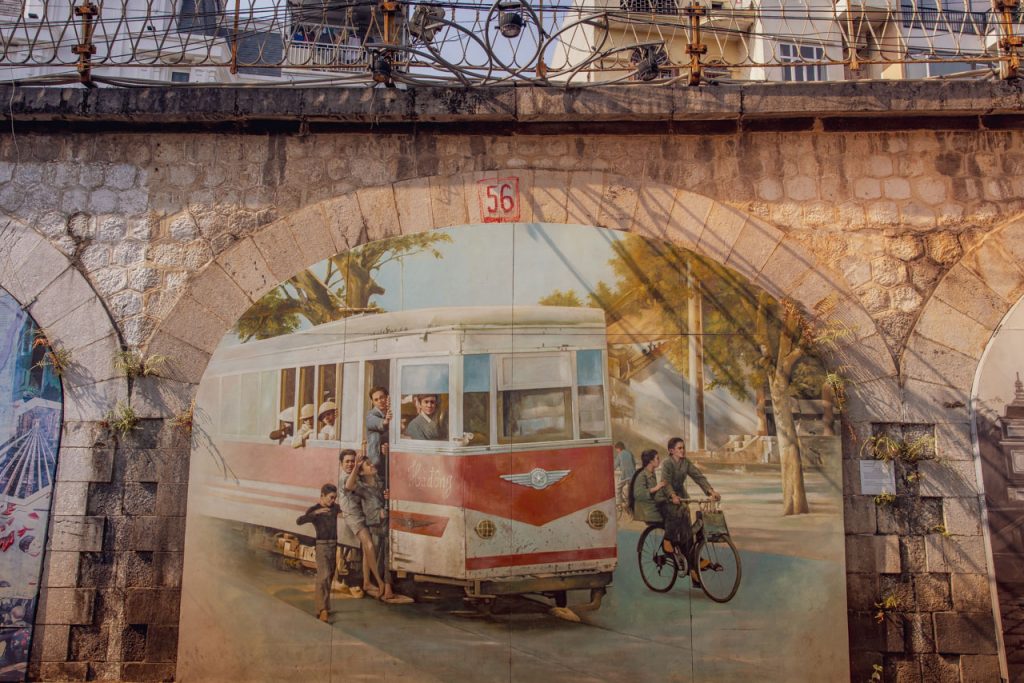
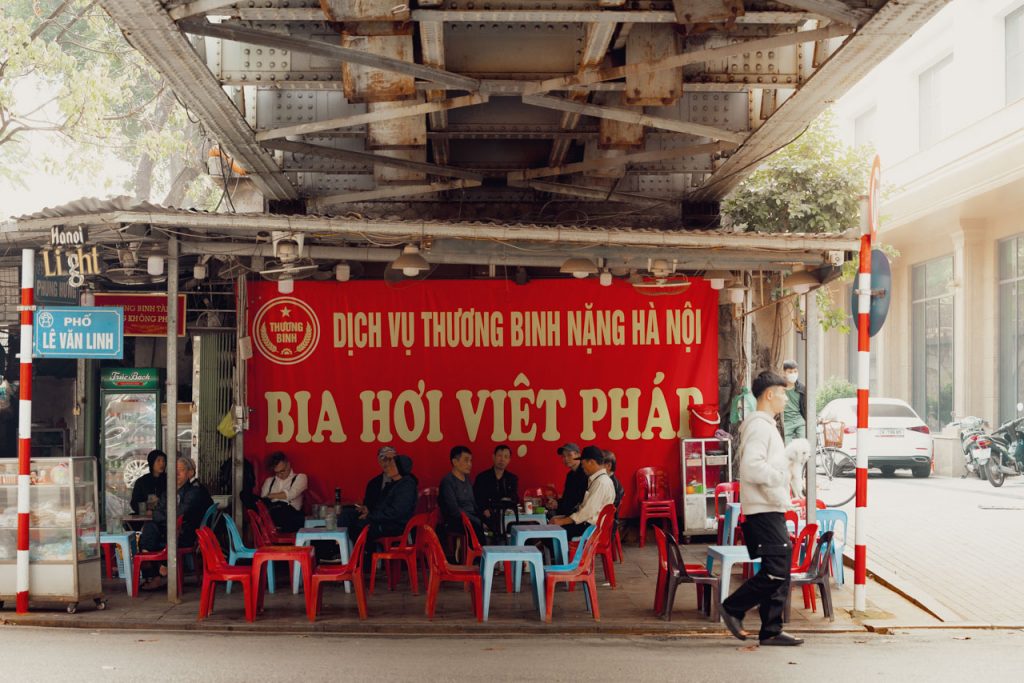
The train schedule
Regardless of which of the two Train Streets you visit, it’s a good idea to check the timetable in advance if you want to experience the train running through the street. According to the rumour, it no longer runs as often as it once did.
You can either find the timetable at one of the cafes, where the locals will be happy to show you the timetables of the day. Or you can check the Vietnam Railway website.
Please arrive 15-20 minutes before the train arrives if you want to be sure of getting a good spot. With that said, you can expect to hang around a little longer. The trains in Vietnam are notoriously late.
When we last visited Hanoi in April 2024, we found the schedule below at a cafe on Train Street (north). The train didn’t just arrive on time (Saturday at 8.30 AM) – another train arrived 10 minutes later, which was not on the timetable. We interpreted that as a bonus experience and an indicator of a somewhat unpredictable timetable.
Weekend
8.30
9.30
11.30
15.20
16.30
17.30
18.00
19.20
19.45
20.45
21.15
Monday – Friday
19.00
19.15
19.45
20.00
20.45
21.15
21.30
22.00
NOTE: The above timetable is from Train Street (north), April 2024. We have heard from others that the train has different summer and winter times and that the timetable only includes the passenger trains. The freight trains apparently run through the street at all times of the day, which is why there are more trains than the schedule suggests.
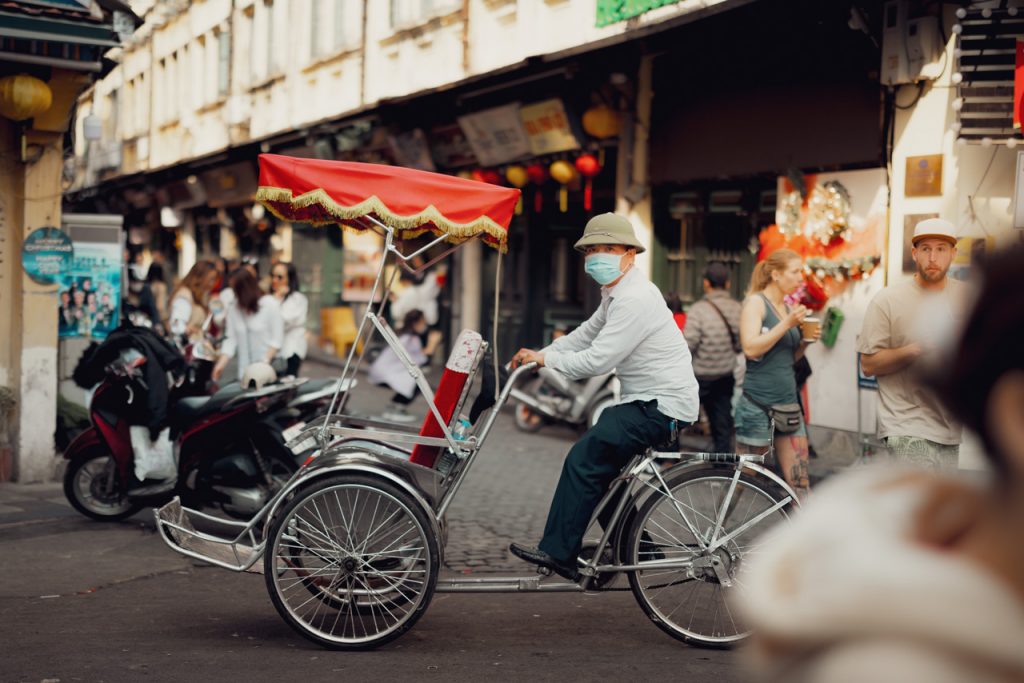
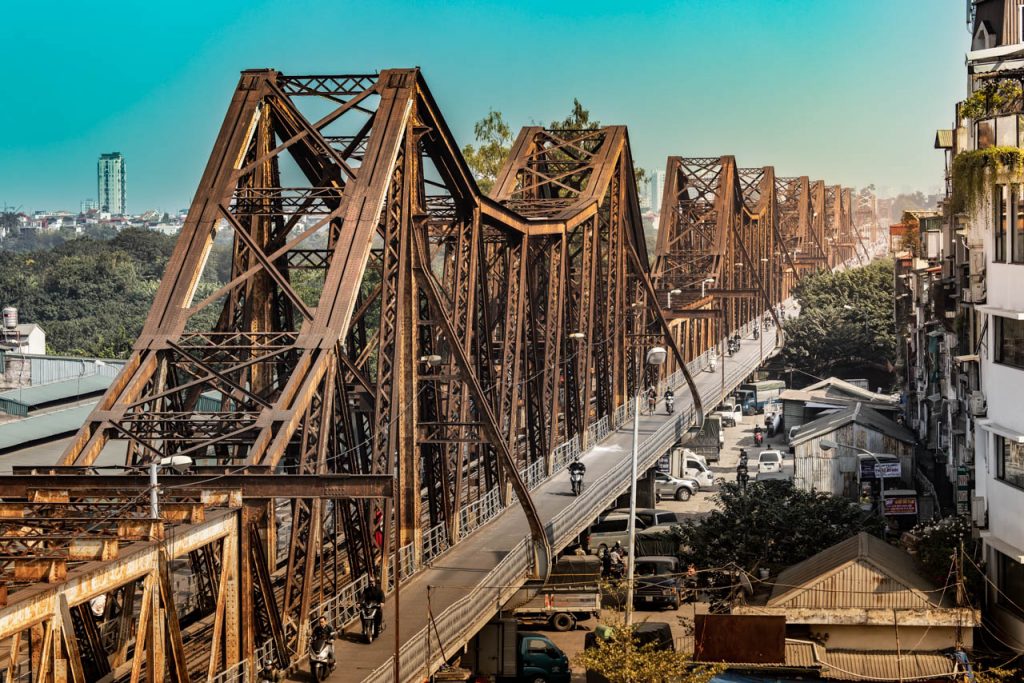
Tourist trap at Train Street
When you visit Train Street (North), there may be locals trying to get some quick cash on your behalf. In December 2023, we stayed close to Train Street, so we often came by and experienced the classic but harmless tricks of both cafe owners and rickshaw drivers.
The café owners in particular can be quite pushy in front of the barrier to the train street. They will either tell you that you have to pay them an entrance fee (you don’t have to) or that you can only enter Train Street if you accompany them to their cafe (there are other entrances).
The bike drivers seem more helpful when they say that … “the train no longer runs through Train Street. But they would like to cycle you to the place where you can see it”. The location is Long Bien Station, which the train also passes on its way to or from Train Street. So don’t buy into that story.
Long Bien Bridge
Once we chose to hop on a rickshaw as we were going to Long Bien Station anyway. It’s a fun and different way to experience the chaotic traffic in Hanoi. The direct cycle ride from Train Street to Long Bien Station takes approx. 10 minutes and is offered at a premium of VDN 3-400.000. As a starting point, you can negotiate the price based on the knowledge that it usually costs between 100-200.000 VDN for an hour’s drive. Find more tips for riding a rickshaw in Hanoi, here.
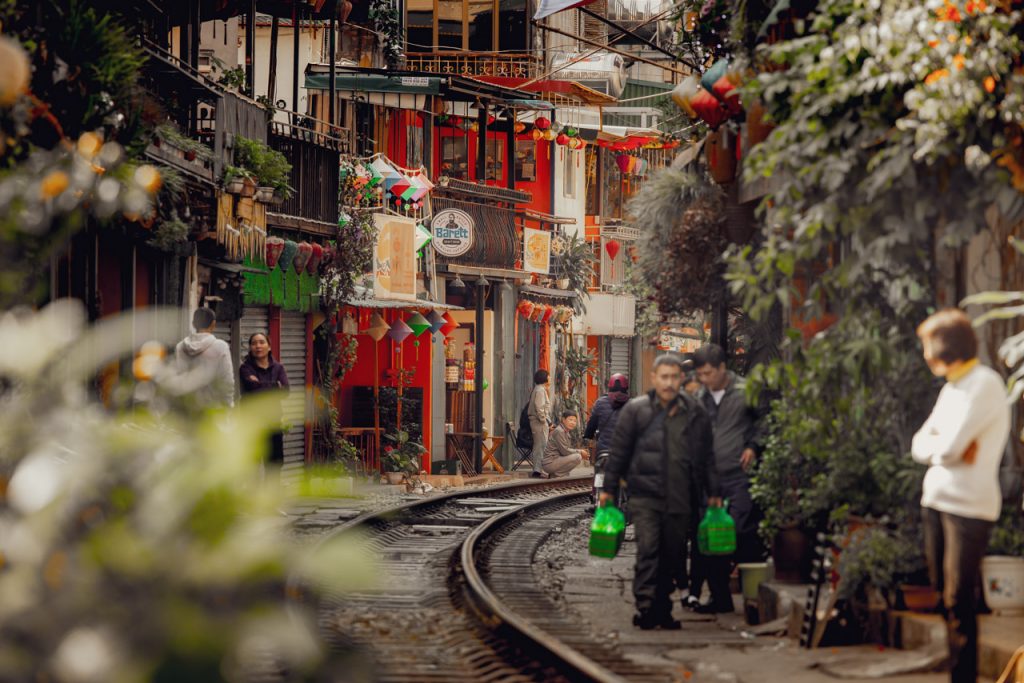
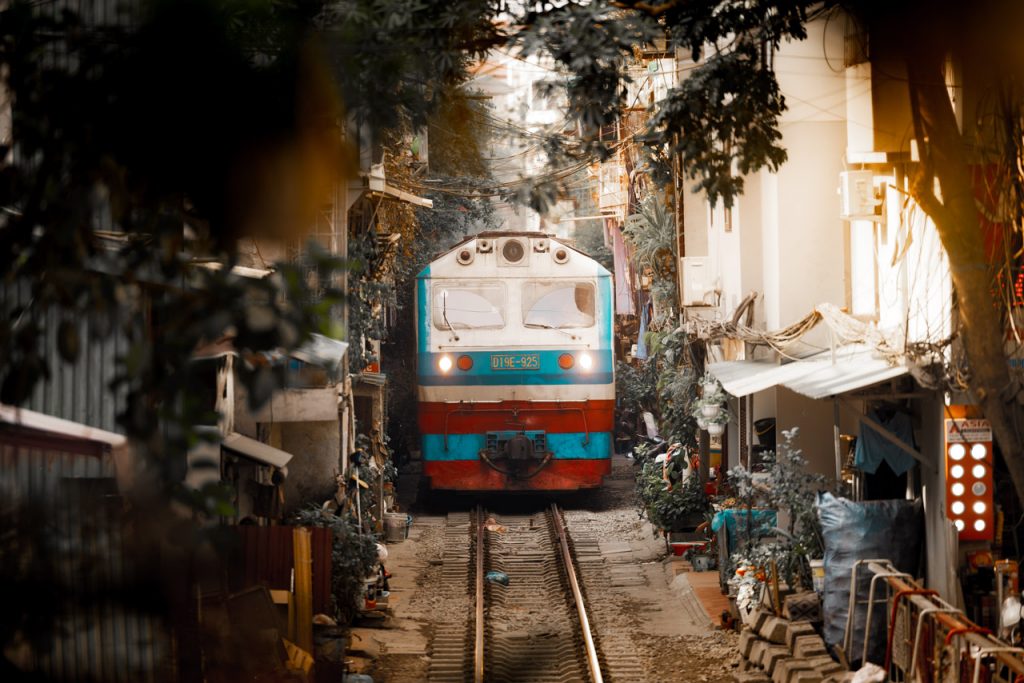
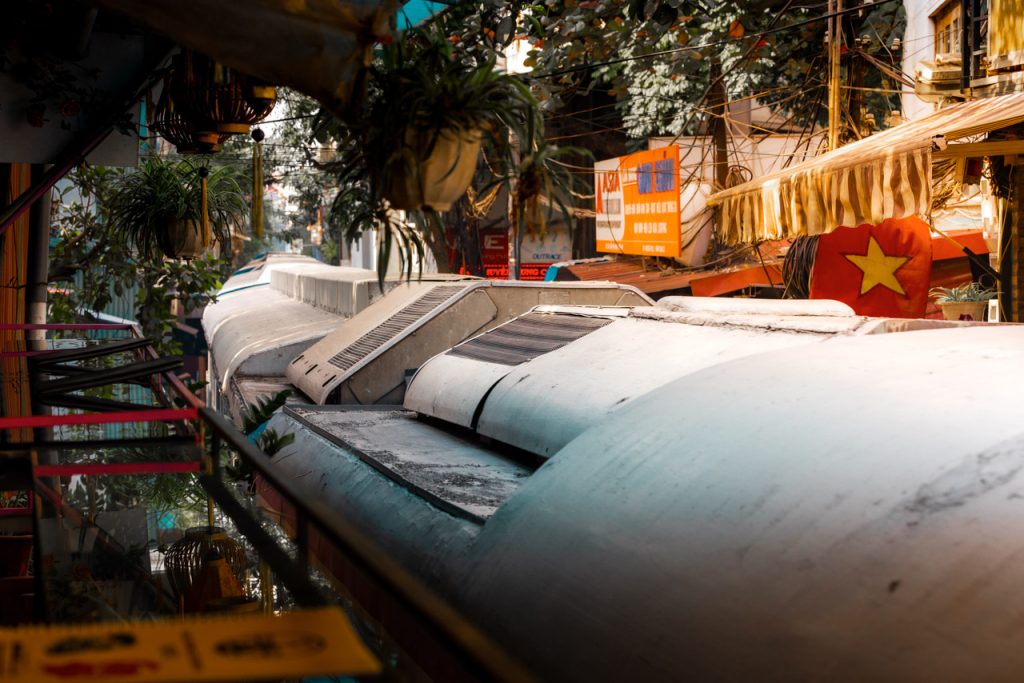
Uncertain future for Train Street
We asked around a bit, and we can’t quite figure out whether there is any truth to the rumour: That the authorities are planning to completely shut down train traffic in Train Street. The plan is probably connected with the construction of a new railway bridge, which will replace the historic Long Bien bridge, whereby the train will have a different route through the city. But we wonder if Train Street will be allowed to continue in some form?

